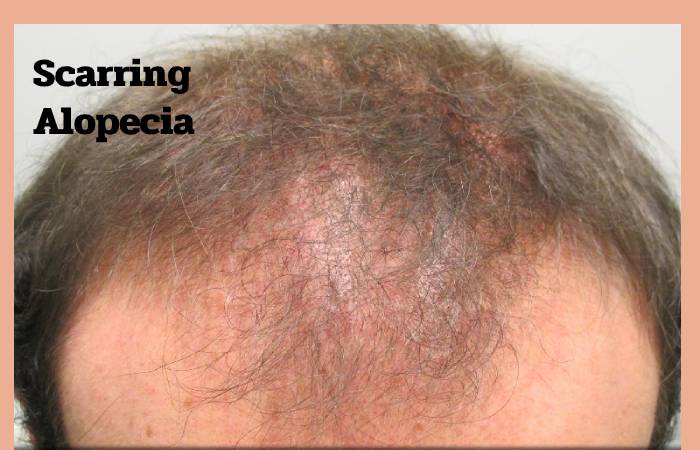Androgenetic Alopecia is the most common cause of baldness in the general population. Still, there are other types of hair loss with different underlying reasons. Discover them here.
There are various types of Alopecia, which is abnormal hair loss.
According to scientific studies, this pathology divided into classes according to its presentation speed, history, accompanying diseases, and clinical criteria.
Such as the characteristics of the hair, and the level of involvement of the underlying skin.
In articles, literature review states that the (most common variant) androgenetic Alopecia affects 6 to 12% of women between 20 and 30 years and 55% of men over 70 years.
Due to its high prevalence, the aesthetic value that many attributes to it, and the possible manifestation of other underlying diseases. It is necessary to know its types to understand how to interpret it.
Table of Contents
Different Types Of It
The variety of types of Alopecia is so great that it is impossible to talk about general patterns and symptoms. Its extension is worldwide, with racial and geographical distribution particularities.
Alopecia is defined as hair loss of any type and anywhere on the skin surface. To facilitate their diagnostic algorithm, clinical hospitals divide this pathology into two broad groups, which are the following:
- 1.Those with the standard or healthy scalp (non-scarring).
- 2.Those with the pathological scalp (scarring).
Non-Scarring Alopecia

The characteristic feature of all the variants that we show you below is that hair loss is not caused by the appearance of fibrous tissue that cancels the follicle.
In these cases, the hair follicle not destroyed, but it does have various changes.
Androgenetic
Androgenetic Alopecia is the most common variant of baldness, as various studies report that it is responsible for this pathology in 95% of cases.
As we have previously said, up to 55% of men suffer from it, while the percentage in women is around 10%.
Dermatological magazines report that there are two leading causes of this disease:
-
- Androgens and skin: Increased action of male hormones (testosterone) on specific areas of the scalp promotes the decreased activity of the hair follicle until it is atrophied.
- Cellular mechanism: Is a response to the hereditary component of each person. The activity of RNA polymerase, an essential enzyme for protein synthesis, is conditioned by certain genetic factors. This can modify hair growth patterns.
There are multiple treatments to alleviate androgenetic Alopecia, such as the use of minoxidil, melatonin, finasteride, or laser therapy.
Some of these drugs have an efficiency of up to 90% because the hair stops falling. Regrowth of the hair follicle, by contrast, is a more complicated task.
Alopecia Areata
Research shows that this type of baldness, characterized by the appearance of round patches in focused areas, is a known microscopic pathology. It believed that various factors condition its appearance:
-
- Genetic: The presence of alopecia areata in family history promotes its debut in the offspring in up to 40% of cases.
- Immunological: It reported that there is a relationship between pathology and immune disorders, such as thyroid diseases or vitiligo (destruction of skin melanocytes). It has linked to conditions such as anemia, diabetes, or rheumatoid arthritis.
- This disease also seems to be related to emotional factors such as stress, infectious agents, and neurological variations.
Other Types Of Non-Scarring Alopecia
We have described the two most important types of non-scarring Alopecia. There are many more, but we are going to limit ourselves to commenting briefly. Here are some examples:
-
- Traumatic Alopecia: This occurs when continuous damage done to the scalp, based on tensile stress and pressure, such as braiding or bows.
- Diffuse: It is generalized reversible hair loss. It can present in acute or chronic form.
- For lack or excess of vitamins, drugs, or drugs: Studies show that vitamin D deficiency or excess vitamin A can cause hair loss.
Scarring Alopecia

According to scientific articles, scarring Alopecia characterized by permanent hair loss, which replaced by fibrosis or hyalinized collagen.
This type of pathologies accounts for 3% of the Alopecia observed in dermatological centers, so its clinical importance is relatively low.
Here are some of the factors that can promote this type of baldness:
-
- Physical causes: Burns, frostbite, and trauma, among others. When the hair follicle destroyed, it replaced by scar tissue, preventing hair from increasing again.
- Tumors: Any tumor that affects the skin, both benign and malignant, can present the appearance of this pathology as a side effect.
- Infections: Leprosy or cutaneous tuberculosis, diseases that permanently damage the skin, can also cause it.
- Chronic inflammatory processes: For example, lupus erythematosus and other non-infectious diseases that cause skin lesions can damage the hair follicle.
What To Remember About The Types Of Alopecia?
As narrated in the previous lines, Alopecia divided into non-scarring and scarring.
The former have different types, depending on the focus of hair loss and the underlying reasons. But genetic and hormonal factors usually condition them.
The scars are entirely different, as they are typically due to trauma and wounds that cause scarring at the site of the hair follicle.
If one idea has to be precise. It is that androgenetic baldness is the most common variant of this disease, which affects mainly middle-aged men.
Fortunately, there are more and more treatments to alleviate it and stop the fall of the scalp.
